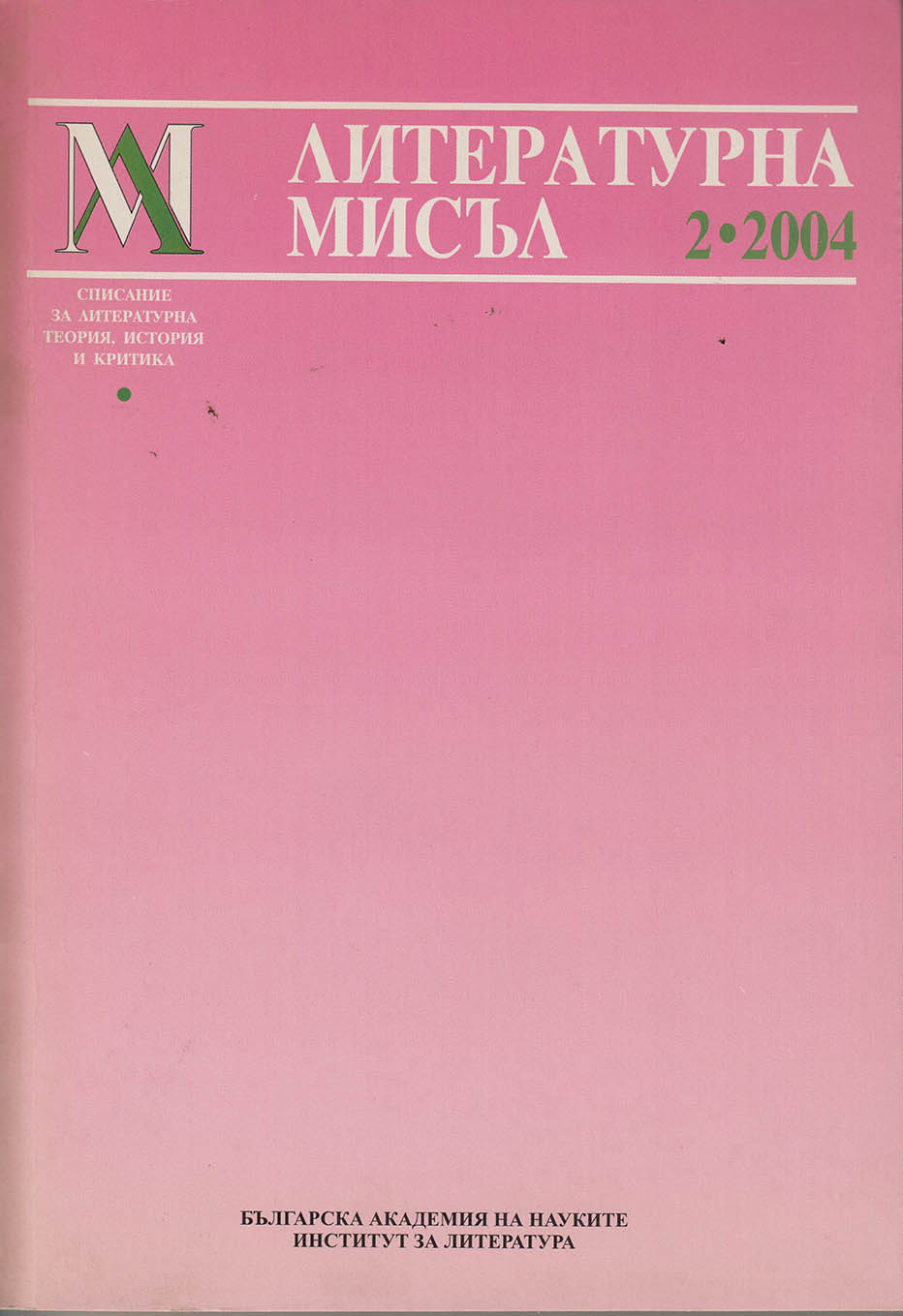Средна Европа и средноевропеиското географско културно пространство (С оглед интерпретациите на М. Кундера, Д. Конрад, В. Хавел, Ч. Милош)
Central Europe and the Central-European Geographical-Cultural Space (In the Interpretations of M. Kundera, G. Konrad, V. Havel, Czeslaw Milosz)
Author(s): Hristina BalabanovaSubject(s): Literary Texts
Published by: Институт за литература - БАН
Summary/Abstract: The very grounds of this article is the proper actualization and multiple definition of the term Central (Middle) Europe during the 1980s and the 1990s, in terms of its geopolitical and geographical cultural space. As an opposition to Germany’s political project Mitteleuropa, in the 1980s a new mid-European concept was launched, being a historical part of the ethnic and cultural diversity of the Austrian monarchy. The authors are intellectuals from Czechoslovakia, Poland and Hungary, all of them representing nations whose cultural identity has been manipulated and threatened by the communist totalitarian regime, and to whom the ex-Danube monarchy has been a “hinterland” for a rather long historical period. The main directions of Central Europe’s cultural and geographical definitions have been illustrated in the selected essay-writings of Milan Kundera, György Conrad, Vaclav Havel, Czeslaw Milosz. To all the four authors presented it is a “spiritual, cultural and mental phenomenon”. The motives are also pointed out, being an indispensable part of their central-Europeanism. Milan Kundera historically documented these in terms of the organized political struggle of the Hungarian, Czech, Slovak and Polish peoples against the communist dictatorship (1956, 1968, and 1980). We have also taken into consideration the discussions held in the West, concerning the new Central European project and their argumentative publicity in the 1989 anthology “In Search of Central Europe”. Since the works of the above-mentioned central European intellectuals do not pursue any academic goals, this article does not aim at discussing the proposition of cultural-geographic identification of Central Europe on behalf of the present criteria of objectivity and impartiality. What is more, this issue has been largely discussed by a number of authors in the anthology mentioned. From a comparative point of view, the analysis registers the common places and language-discourse interrelation of the essayistic texts, but pays particular attention to the connotative differences and their hypostases concerning the 207 modeling of the Central European cultural identity. In other words, the term Central Europe is considered in accordance with the various national reflections. On the one hand, the texts share the character of a collective project ebbed by the urge to demonstrate national compactness purified of all inherited national contradictions and cultural conflicts and even glorified as an ideal of the European future. On the other hand, regardless of the common “Central European attitudes” of the authors of the project, the national view point (together with all accompanying mythologemes of identity), generates discrepancies that question the historical reality of the cultural integrity and geographic localization of Central Europe.
Journal: Литературна мисъл
- Issue Year: 2004
- Issue No: 2
- Page Range: 147-158
- Page Count: 12
- Language: Bulgarian
- Content File-PDF

